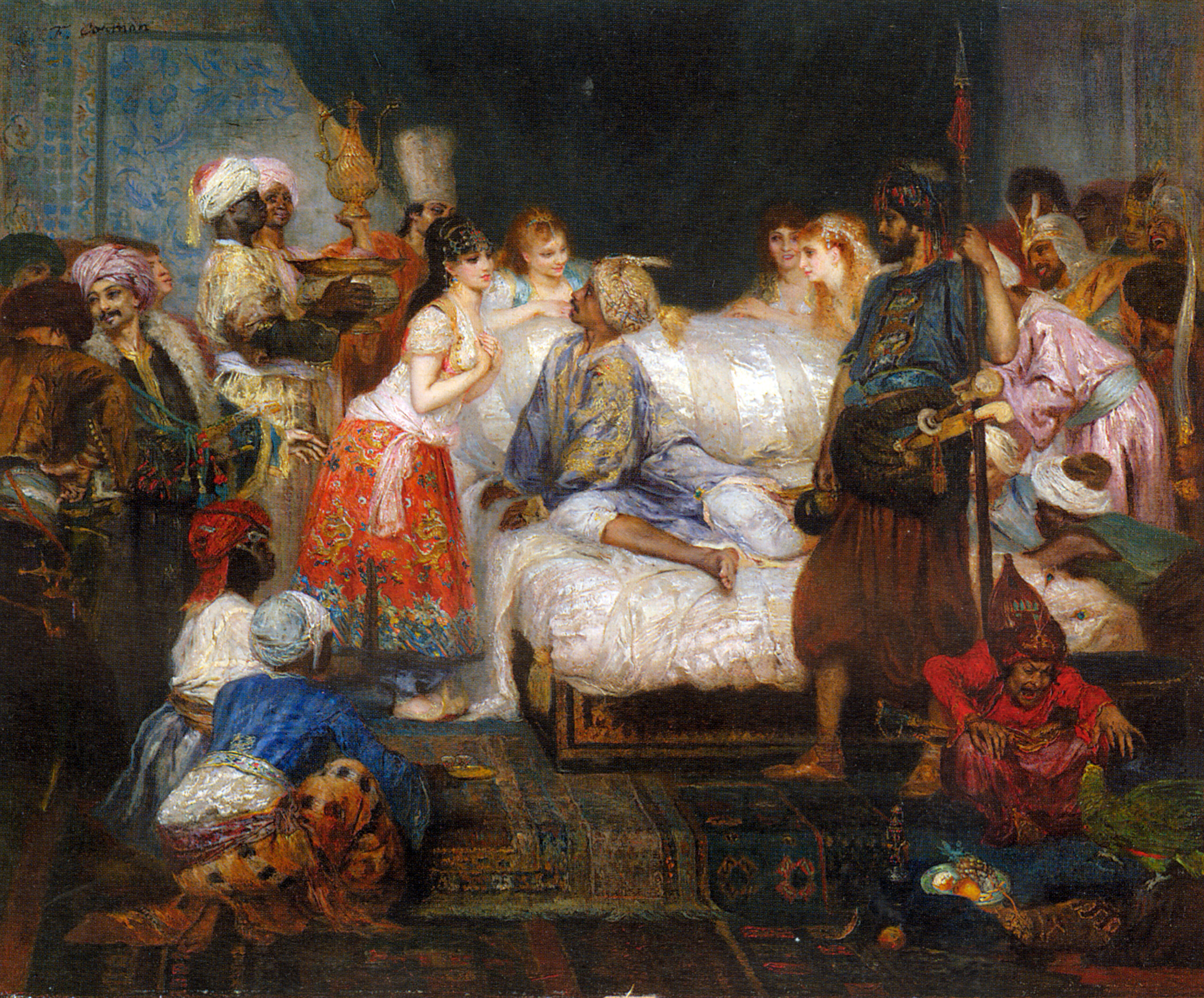https://upload.wikimedia.org/wikipedia/commons/6/65/BainbridgeTribute.jpg
During the Elizabethan era, the seas were ruled by Sir Francis Drake, John Hawkins and others. Elizabeth subsidized voyages to seize Spanish ships, and was rewarded by a share of the booty (although her diplomacy required that she deplore such activities to ambassadors of other countries). The hey-day of piracy as we think of it was during the 1700’s in the Caribbean and was dominated by Blackbeard (Edward Teach), Henry Morgan, Jean Lafitte. It was largely suppressed by English and American navies by Jane Austen’s time.
The Barbary pirates, also known as corsairs, were very active during the Georgian era. They were based in northern coast of Africa, in Morocco, Algiers, Tunis and Tripoli. These were separate nations but all were ruled by the Ottoman Empire. They plundered ships in Mediterranean, and frequented the Adriatic and the seas around Ireland and Iceland. They were known for holding people of means or status for ransom, and for taking slaves as well as merchandise. (They needed roughly 200 men per ship to man the oars of their galleys.) They favoured galleys which were fast and easy to manoeuver in shallow waters; they also liked to disguise themselves as merchant ships. The Barbary pirates were active during the Regency era (they were not completely suppressed until the Victorian era). Byron’s poem “The Corsair” was a romance inspired by them.
Privateers were privately owned ships whose owners had letters of marque from their own government authorizing seizure of enemy ships, especially trade ships. There was a very thin line between privateers and pirates: many privateers exceeded their license, and one king’s privateer was another’s pirate. Privateers were still present during the Regency era and eers usually held no scruples about exceeding their letters of marque if profit ensued. An interesting side note: by the Regency era, pirates wore what normal gentlemen did: boots, trousers or breeches, shirts with stocks and coats.
European privateers were drawn to the Barbary Coast, bringing their wooden ships (or the knowledge of how to build them)-these ships needed fewer men to man the oars, were faster, and allowed for more men at arms on board. By Jane Austen’s time, the Barbary Pirates had negotiated “treaties” with European states, which involved payment of protection money. While America was protected by Britain, those protections applied to American shipping but after the Revolution, those protections no longer held. American merchant ships were captured, and their crews held as slaves, while the pirates demanded ransoms the new nation could not pay. Negotiations were extraordinarily complex, and winning an agreement with one Barbary nation did not ensure that the others (or the one who signed it) would honour it. Many prisoners died in captivity; some were held as slaves for many years. In 1801, Thomas Jefferson declared war on the Barbary Pirates and, after numerous setbacks, finally won in Tripoli (hence “…the shores of Tripoli…” in the Marines’ Hymn).
When captured alive, pirates were taken to London, where they usually were held in Marshalsea Prison, and, if convicted in the Admiralty Court, transported to Wapping to be executed at Execution Dock on the banks of the Thames, which was symbolic of the seas where their crimes were committed. They were known as enemies of all mankind, and were usually considered guilty before ever facing a trial. Execution was by hanging (with a short rope that resulted in strangulation instead of a cleanly-broken neck) and bodies were left hanging for 3 days or longer, to serve as a deterrent (with indifferent success, it must be said). The last execution of this nature occurred in 1830.
Sources include:
Kilmeade, Brian and Yaeger, Don. THOMAS JEFFERSON AND THE TRIPOLI PIRATES The Forgotten War That Changed American History. 2015: Sentinel (an imprint of Penguin Random House LLC), New York, NY.
English Legal History. “Pirate Executions in Early Modern London” by Rebecca Simon, posted 7/9/2014. HERE
Pirates and Privateers. “The Barbary Corsairs” by Cindy Vallar, (c) 2004. HERE
Image: Captain Bainbridge Pays Tribute to the Dey, by Henry Ogden (1856-1936). Wikimedia Commons HERE Image created 12/8/2008 by ZeD. Public domain in the U.S.



